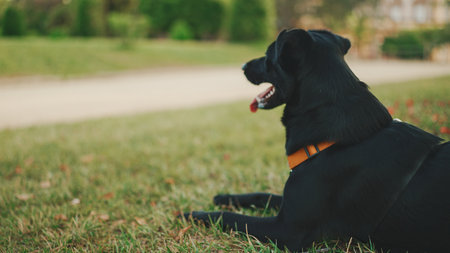1. Understanding Exotic Amphibians and Their Unique Needs
Exotic amphibians come in many shapes, sizes, and colors, each with its own unique care requirements. Before handling these fascinating creatures, it’s essential to understand their natural habitats, behaviors, and specific needs to ensure their well-being.
Types of Exotic Amphibians
There are several types of exotic amphibians commonly kept as pets. Each species requires different levels of care and attention. Below is a comparison of some popular exotic amphibians:
| Amphibian Type | Natural Habitat | Care Level | Special Requirements |
|---|---|---|---|
| Dart Frogs | Tropical rainforests | Intermediate | High humidity, non-toxic diet in captivity |
| Axolotls | Lakes and freshwater bodies | Beginner-friendly | Cooled water, soft substrate to prevent injury |
| Pacu-Man Frog (Horned Frog) | Tropical forests and grasslands | Easy to moderate | Adequate hiding spots, moisture control |
| Siren Salamanders | Muddy swamps and marshes | Difficult | Aquatic setup with proper filtration |
The Importance of Mimicking Natural Habitats
Amping up your pet’s environment to closely resemble its natural habitat is key to keeping it healthy. Factors like temperature, humidity, lighting, and substrate should all be carefully regulated. For example:
- Tropical Species (e.g., Dart Frogs): Require high humidity (70-100%) with live plants and misting systems.
- Aquatic Amphibians (e.g., Axolotls): Need cool, filtered water with stable temperatures around 60-68°F.
- Semi-Terrestrial Amphibians (e.g., Pacu-Man Frogs): Thrive in moist soil with plenty of hiding spots.
The Right Diet for Healthy Growth
An amphibian’s diet varies depending on its species. While some eat small insects, others require aquatic prey or specialized food sources. Here are some common dietary needs:
| Amphibian Type | Main Diet Components | Nutritional Considerations |
|---|---|---|
| Dart Frogs | Tiny insects (fruit flies, pinhead crickets) | Dusted with calcium supplements for bone health |
| Axolotls | Nightcrawlers, bloodworms, pellets | Avoid hard foods that could cause impaction |
| Pacu-Man Frogs (Horned Frogs) | Larger insects, small rodents occasionally | Avoid overfeeding as they can become obese quickly. |
| Siren Salamanders | Aquatic worms, small fish, shrimp | A varied diet prevents nutritional deficiencies. |
Avoiding Common Mistakes in Amphibian Care
If you’re new to caring for exotic amphibians, it’s easy to make mistakes that could harm your pet. Here are some common pitfalls to avoid:
- Poor Humidity Control: Many amphibians need high humidity; too little can cause dehydration and skin issues.
- Mishandling: Some amphibians have sensitive skin that absorbs toxins from human hands—always wash thoroughly before handling or use gloves if necessary.
- The Wrong Substrate: Avoid sharp gravel or sand that could cause impaction or injuries.
- Ineffective Tank Setup: Ensure proper lighting, temperature regulation, and hiding spaces to reduce stress.
- Poor Diet Choices: Feeding an improper diet can lead to malnutrition or obesity—always research the species-specific dietary needs.
Your Role as a Responsible Amphibian Keeper
Caring for an exotic amphibian is a rewarding experience but requires research and dedication. By understanding their natural habitats, dietary needs, and environmental conditions, you can create a safe and comfortable home for your pet while ensuring its long-term health and well-being.
2. Basic Safety Precautions for Handling Amphibians
When handling exotic amphibians, safety should always be a top priority. Proper hygiene, minimizing stress, and ensuring a safe experience for both you and your pet are essential. Follow these basic precautions to handle your amphibian safely.
Wash Your Hands Before and After Handling
Amphibians have highly sensitive skin that can absorb chemicals, oils, and bacteria from human hands. To prevent harming them or exposing yourself to potential pathogens, always wash your hands before and after handling.
Recommended Handwashing Steps:
- Use lukewarm water and mild, unscented soap.
- Rinse thoroughly to remove any soap residue.
- Dry hands completely before touching your pet to avoid transferring excess moisture or harmful substances.
Avoid Overhandling to Prevent Stress
Amphibians are not like traditional pets that enjoy frequent handling. Too much interaction can cause stress, leading to health issues or even a weakened immune system. Pay attention to signs of stress such as excessive movement, color changes, or attempts to escape.
Signs Your Amphibian Is Stressed:
| Behavior | Possible Cause |
|---|---|
| Jumping or trying to escape | Feeling threatened or uncomfortable |
| Darkening skin color | Stress response or environmental discomfort |
| Refusal to eat after handling | Anxiety or overstimulation |
Use Gentle Handling Techniques
Always handle your amphibian with care. Never squeeze or grip too tightly, as their delicate bodies can be easily injured. Instead, let them rest on your hand and move at their own pace.
Best Practices for Safe Handling:
- If necessary, use wet gloves or damp hands to avoid damaging their skin.
- Support their body fully without applying pressure.
- Avoid sudden movements that could startle them.
Ensure a Safe Environment During Handling
Your surroundings play a big role in keeping your amphibian safe. Make sure youre handling them in a controlled environment where they cant fall or escape.
Key Environmental Safety Tips:
- Avoid handling near open water sources where they could drown if dropped.
- Keep pets like cats and dogs away during handling sessions.
- Sit close to the ground or over a soft surface to reduce fall risks.
By following these basic safety precautions, you can create a safer and more comfortable experience for both you and your exotic amphibian pet.

3. Step-by-Step Guide to Proper Handling Techniques
Handling exotic amphibians requires a gentle and patient approach to ensure both your safety and the well-being of the animal. Follow these step-by-step guidelines to minimize stress and avoid harming your amphibian friend.
Step 1: Prepare Your Hands
- Wash your hands with dechlorinated water or wear powder-free gloves to prevent transferring harmful substances to the amphibian’s sensitive skin.
- Avoid using soap, lotion, or hand sanitizer before handling, as chemicals can be toxic to amphibians.
Step 2: Approach Slowly and Calmly
- Move your hands gently towards the amphibian without sudden movements.
- If the amphibian seems stressed or tries to escape, give it some time to settle before trying again.
Step 3: Pick Up with Care
- Use both hands for larger species, supporting their body evenly.
- Avoid squeezing or gripping too tightly; let the amphibian rest in your hands naturally.
- If handling a delicate species, use a soft, damp cloth for extra support.
Step 4: Hold Securely but Gently
- Keep your hands low over a soft surface in case the amphibian jumps or slips.
- Avoid excessive movement; keep handling time short to reduce stress.
Step 5: Return Safely to Its Habitat
- Cautiously lower the amphibian back into its enclosure, allowing it to move away on its own.
- Avoid dropping or forcing it into place—let it find a comfortable position naturally.
Quick Handling Tips
| Dos | Donts |
|---|---|
| Wash hands with dechlorinated water before handling. | Avoid handling right after applying lotion or sanitizer. |
| Support the amphibian’s body evenly while holding. | Never grab by the limbs or tail. |
| Keep handling sessions brief to reduce stress. | Avoid excessive handling, especially for delicate species. |
| Create a calm environment with minimal noise and movement. | Avoid sudden movements that may startle the animal. |
The key to safely handling exotic amphibians is patience and respect. By following these steps and understanding their needs, you can interact with them without causing harm or unnecessary stress.
4. Common Mistakes to Avoid When Handling Amphibians
Handling exotic amphibians requires care and attention to detail. Many beginners make common mistakes that can stress or harm their pets. Below, we’ll cover frequent errors and how to avoid them.
Over-Handling
Amphibians have sensitive skin that absorbs substances easily. Handling them too often can remove their protective mucus layer, leading to health issues. Limit handling to only when necessary and always with clean, damp hands.
Improper Support
Many amphibians are fragile and need proper support when held. Avoid gripping too tightly or letting them dangle, as this can cause injury. Instead, gently cup your hands under their body for full support.
Using Dry Hands
Your hands should always be moist before handling amphibians. Dry hands can damage their delicate skin and disrupt their moisture balance. Rinse your hands with dechlorinated water before touching them.
Ignoring Stress Signs
If your amphibian squirms excessively, breathes rapidly, or changes color, it may be stressed. Return it to its habitat immediately and allow it time to recover.
Poor Hygiene Practices
Failing to wash your hands before and after handling can transfer harmful bacteria between you and your pet. Always wash thoroughly with soap after handling to prevent contamination.
Avoid These Common Handling Mistakes
| Mistake | Why It’s Harmful | How to Prevent It |
|---|---|---|
| Over-handling | Removes protective mucus layer | Limit handling sessions |
| No hand moisture | Can dry out sensitive skin | Dampen hands with dechlorinated water |
| Poor support | Causes stress or injury | Cup hands under the body for full support |
| No hand washing | Bacteria transfer risk | Wash hands before and after handling |
| Irritating substances on hands | Chemicals can harm amphibians | Avoid lotions, soaps, or perfumes before handling |
Avoiding these mistakes will help ensure the safety and well-being of your exotic amphibian while building trust between you and your pet.
5. Ensuring Long-Term Amphibian Health and Well-Being
Keeping your exotic amphibian healthy requires more than just proper handling. A well-maintained environment, regular health checks, and understanding their unique needs are essential for their long-term well-being. Here’s how you can ensure your amphibian thrives.
Creating the Ideal Habitat
Providing a clean, stable environment is key to maintaining your amphibian’s health. Different species have specific habitat needs, so its important to research the ideal setup for your pet.
Essential Habitat Factors
| Factor | Best Practices |
|---|---|
| Temperature | Maintain appropriate temperature ranges using heaters or cooling systems as needed. |
| Humidity | Ensure adequate humidity levels with misting and proper ventilation. |
| Substrate | Use safe, non-toxic materials like coconut fiber or sphagnum moss. |
| Water Quality | Provide dechlorinated water and clean it regularly to prevent infections. |
| Lighting | Mimic natural light cycles with UVB or LED lighting when necessary. |
Recognizing Signs of Stress or Illness
Ampihibians can be sensitive to environmental changes, so knowing the signs of distress or illness is crucial. Watch for these common symptoms:
- Lethargy or decreased activity
- Loss of appetite
- Slimy or discolored skin
- Swelling or unusual bumps
- Difficulties in movement or floating irregularly in water
- Excessive shedding of skin
If you notice any of these signs, consult an exotic pet veterinarian as soon as possible.
Nutritional Needs and Feeding Routine
A balanced diet plays a critical role in keeping your amphibian healthy. Ensure they receive the right food based on their species.
Feeding Guidelines by Amphibian Type
| Amphibian Type | Main Diet | Feeding Frequency |
|---|---|---|
| Frogs (e.g., Tree Frogs) | Cultured insects like crickets and mealworms; occasional supplements | Every 2-3 days |
| Salamanders/Newts | Daphnia, bloodworms, earthworms, and small fish | Every 3-4 days |
| Aquatic Amphibians (e.g., Axolotls) | Pellets, frozen shrimp, small fish, earthworms | 2-3 times per week |
The Importance of Regular Health Checks
A routine check-up can help detect potential health issues early. Here’s what you should monitor:
- Shed skin regularly to ensure no retained pieces that could lead to infections.
- Eyelids and mouth should be free from swelling or unusual discharge.
- Bodily movements should be smooth without signs of weakness or tremors.
- The enclosure should remain clean with no foul odors or excessive waste buildup.
Ampihibians may not always show obvious signs of illness until its too late, so staying proactive with care and observation is vital.
Mental Stimulation and Enrichment
An enriched environment helps reduce stress and keeps your amphibian active. Consider adding:
- Diverse hiding spots using plants and rocks.
- A varied diet to mimic their natural feeding habits.
- A properly sized tank to allow movement and exploration.
- A consistent day-night light cycle to regulate behavior.
Caring for an exotic amphibian requires attention to detail, but by following these best practices, you can create a safe and thriving home for your unique pet.


